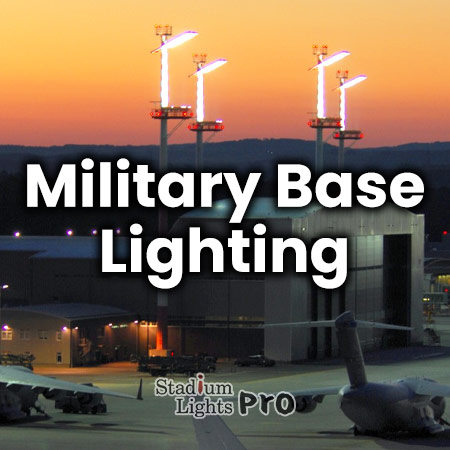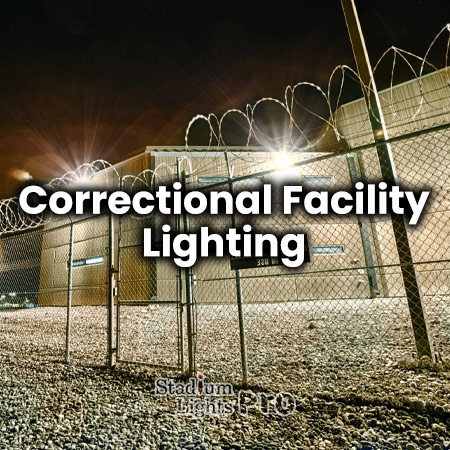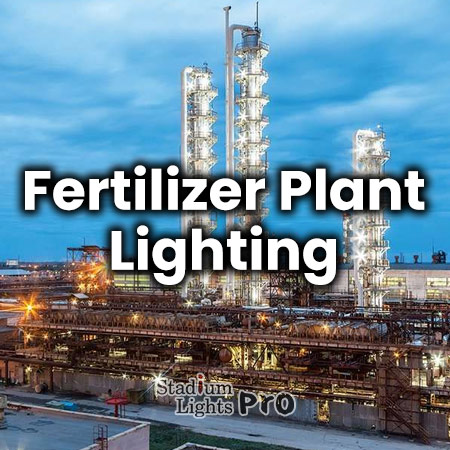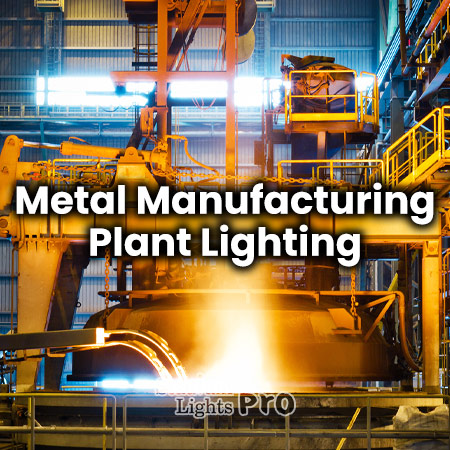In the world of industrial and commercial operations, cold storage facilities play a pivotal role in preserving perishable goods, pharmaceuticals, and other temperature-sensitive products. These facilities maintain a controlled environment to extend the shelf life and quality of their contents. One crucial aspect often overlooked in cold storage facilities is lighting. Cold storage lighting is not just about illuminating the space; it is about optimizing visibility, energy efficiency, safety, and product preservation.
The unique challenges of cold storage lighting
In cold storage facilities, lighting fixtures face the unique challenge of operating in an environment characterized by extreme temperature fluctuations. These fluctuations occur as the facility cycles between maintaining its internal cold temperatures and the warmer ambient temperatures outside the storage area. For example, a typical cold storage facility might maintain temperatures as low as -20°C (-4°F) or even lower.
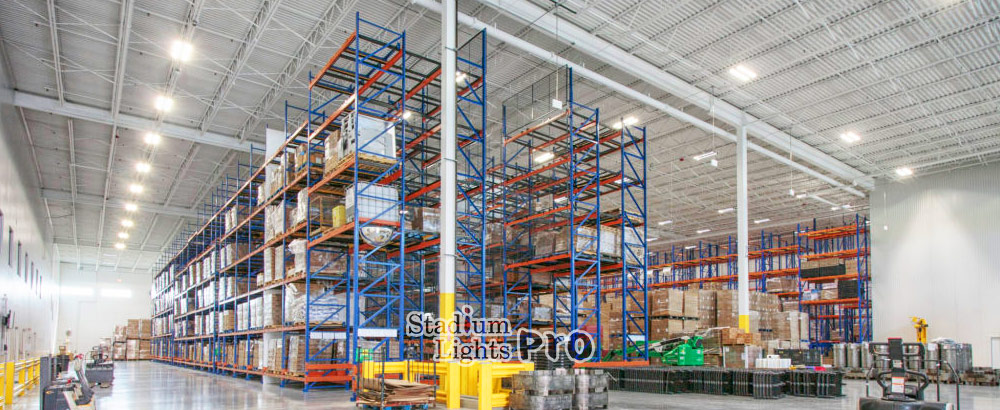
Temperature extremes
Cold storage facilities operate at temperatures that are significantly colder than typical room temperatures. Traditional lighting technologies, like incandescent bulbs and fluorescent tubes, are sensitive to extreme temperatures. In such cold environments, these lighting sources may struggle to start, produce significantly less light output, or fail altogether.
Functionality
Lighting fixtures must maintain their intended level of performance despite the extreme cold. This includes providing sufficient illumination for workers to carry out tasks safely and effectively. If lighting fixtures are unable to operate optimally under these conditions, it could lead to reduced visibility, increased safety risks, and hindered productivity.
Safety
Safety is a paramount concern in any working environment, and cold storage facilities are no exception. Malfunctioning lighting fixtures might pose a safety hazard due to reduced visibility or uneven illumination. Moreover, fixtures that do not meet safety standards in terms of electrical components and insulation could lead to the risk of electrical shock or fire.
Material durability
The materials used in the construction of lighting fixtures must be able to withstand the expansion and contraction that occurs due to extreme temperature variations. If materials are not suited for these conditions, they might become brittle, crack, or degrade over time, compromising the structural integrity of the fixture.
Moisture and condensation
Temperature fluctuations in cold storage environments can lead to the formation of condensation or frost on lighting fixtures. This moisture can potentially infiltrate the fixture, affecting its electrical components and performance. Fixtures designed for cold storage need to be sealed and moisture-resistant to prevent these issues.
Efficiency
While the focus is often on durability and safety, energy efficiency is also a crucial consideration. Inefficient lighting fixtures not only contribute to higher energy costs but can also generate more heat. In a cold storage environment, excess heat can lead to uneven temperatures or exacerbate condensation problems.
Worker safety
Cold storage environments are inherently more challenging to navigate due to the low temperatures, potential presence of frost or condensation, and the need for workers to wear protective gear. Proper lighting is essential to eliminate hazards and reduce the likelihood of accidents. Insufficient illumination can lead to trips, slips, and other workplace injuries that might result from poor visibility.
Navigation
Cold storage facilities are often vast spaces with numerous aisles, racks, and storage units. Workers need to navigate through these areas quickly and accurately to retrieve or store items. Effective lighting assists in creating clear pathways and demarcating different sections, making it easier for employees to find their way around the facility and locate products efficiently.
Product handling
Many products stored in cold storage facilities are sensitive to mishandling, temperature fluctuations, or exposure to light. Adequate lighting ensures that workers can inspect items for quality, read labels or barcodes, and handle products with care. This is particularly crucial in industries like food storage and pharmaceuticals, where product integrity directly impacts consumer safety.
Quality control
In industries where product quality is of utmost importance, such as food processing or pharmaceuticals, accurate visual inspection is essential. Proper lighting conditions allow workers to assess the condition, color, texture, and overall quality of items before they are shipped or used. Any deviations from the expected quality can be quickly identified and addressed.
Task performance
Cold storage facilities involve a range of tasks, from inventory management to maintenance and cleaning. Each task requires appropriate lighting for efficient execution. Whether it’s reading labels, recording information, performing maintenance checks, or identifying potential issues, having the right amount and quality of light is essential for task accuracy and speed.
Employee well-being
Adequate lighting doesn’t just enhance functionality; it also contributes to the overall well-being of the workers. Dim or inadequate lighting can lead to eye strain, discomfort, and reduced morale among employees. Providing a well-lit environment promotes a more comfortable and pleasant workspace.
Emergency situations
In the event of emergencies such as power outages or evacuations, proper lighting becomes even more critical. Emergency lighting systems that automatically activate during power failures ensure that workers can safely exit the facility and respond to emergencies without confusion or panic.
Regulatory compliance
Many industries, including cold storage, are subject to regulations and standards that mandate specific lighting levels for safety and quality assurance. Adhering to these regulations not only ensures a compliant facility but also establishes a baseline for optimal operations.
Best lighting solutions for cold storage facilities
LED lighting
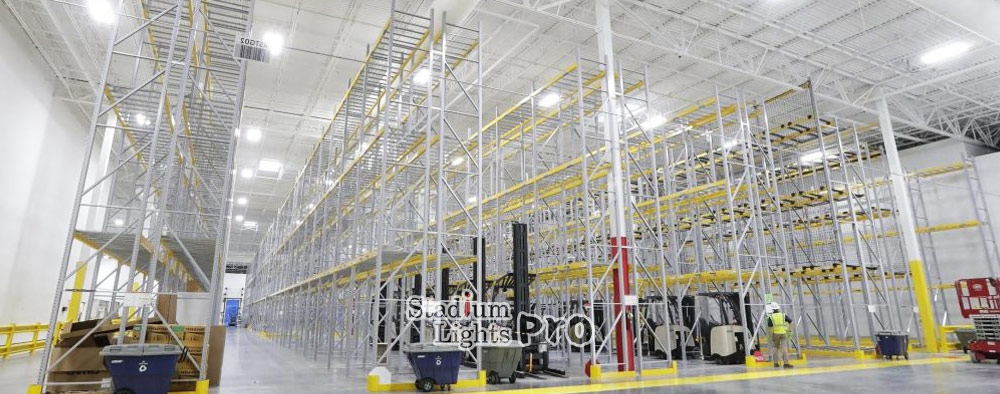
What kind of lighting should we use? Light Emitting Diode (LED) technology is a game-changer in cold storage lighting. LEDs are highly energy-efficient, emit less heat compared to traditional bulbs, and can withstand extreme temperatures. They provide instant illumination even in cold conditions and are available in various color temperatures to match specific requirements.
Vapor tight fixtures
Vapor tight or weatherproof fixtures are designed to protect against moisture, dust, and temperature fluctuations. They are ideal for cold storage environments where condensation and frost can be an issue. These fixtures also prevent the intrusion of contaminants, ensuring a hygienic environment.
Motion sensors and controls
Implementing motion sensors and lighting controls can significantly improve energy efficiency. Lights can be programmed to turn on only when motion is detected, reducing unnecessary energy consumption.
Emergency lighting
In the event of a power outage or emergency, it’s crucial to have reliable emergency lighting systems in place. LED emergency lights with backup batteries can provide illumination during critical moments.
Color rendering
Certain industries require accurate color rendering to assess product quality. Lighting with a high Color Rendering Index (CRI) can ensure that colors appear as they should, aiding in quality control processes.
Frost-free fixtures
Some lighting fixtures come with built-in features to prevent frost accumulation. These fixtures are designed to generate enough heat to counteract the effects of cold surfaces, ensuring consistent illumination.
Low-glare design
Excessive glare from lighting can hinder visibility and cause discomfort for workers. Opting for fixtures with low-glare design helps maintain a comfortable and safe environment.
How are LEDs able to withstand extremely low temperatures for cold storage?
LEDs (Light Emitting Diodes) are well-suited for cold storage environments due to their inherent design and characteristics that allow them to withstand extremely low temperatures.
Solid-state design
Unlike traditional lighting sources that involve fragile components like filaments or glass enclosures, LEDs are solid-state devices. This means they have no moving parts or delicate structures that can be affected by temperature changes. This inherent durability makes LEDs more resistant to mechanical stresses and thermal shocks caused by temperature fluctuations.
Efficient heat dissipation
LEDs are known for their energy efficiency, and a significant part of this efficiency is due to their ability to generate less heat compared to traditional bulbs. LEDs produce light through electroluminescence, a process that generates minimal heat as a byproduct. This lack of excess heat production makes them better suited for cold environments where maintaining low temperatures is crucial.
Wide operating temperature range
LED manufacturers design their products to operate within a wide temperature range. High-quality LEDs are engineered to function reliably in temperatures well below freezing, often as low as -40°C or even lower. This ensures that the LEDs can start and provide illumination even in extremely cold conditions found in cold storage facilities.
Efficient semiconductor operation
LEDs are made from semiconductor materials that operate efficiently at various temperatures. Unlike traditional lighting sources that might struggle to start or produce dim light in cold temperatures, LEDs offer instant illumination and can maintain their light output even in sub-zero temperatures.
Thermal management
While LEDs generate less heat, they still produce some heat during operation. Quality LED fixtures often include effective thermal management systems that help dissipate any heat generated, ensuring that the LEDs remain within their optimal operating temperature range.
Resilience to temperature fluctuations
Cold storage environments experience temperature fluctuations as the facility cycles between maintaining internal cold temperatures and the warmer ambient temperatures outside. LEDs are designed to handle these temperature variations without compromising their functionality.
Material selection
The materials used in LED manufacturing are chosen for their ability to withstand temperature extremes. These materials are carefully selected to ensure that the LEDs remain stable and reliable across a wide range of conditions.
Testing and certification
Reputable LED manufacturers subject their products to rigorous testing to ensure they meet industry standards for various conditions, including temperature extremes. This testing helps verify that the LEDs can indeed operate as specified even in cold storage environments.
How many lux do we need to light the cold storage facility?
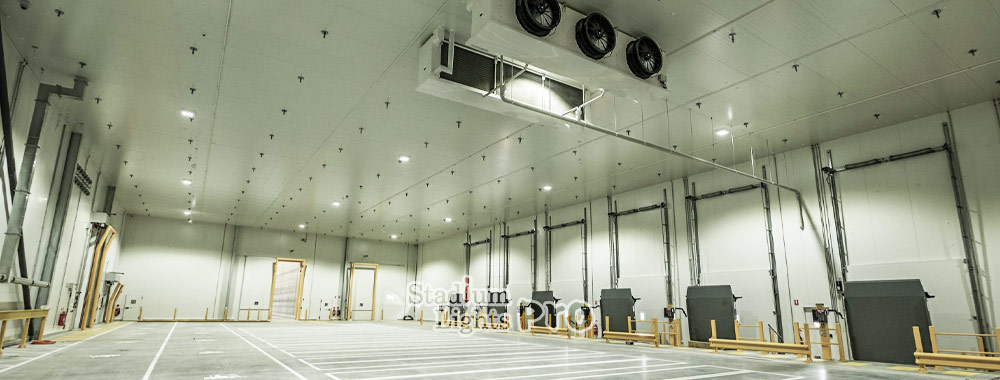
The recommended lighting level, measured in lux, for a cold storage facility can vary depending on the specific tasks being performed within the facility and the industry standards that apply. However, there are general guidelines that can provide a starting point for determining the appropriate lighting levels. Keep in mind that these values might need to be adjusted based on the specific requirements of your facility and the tasks conducted within it.
Storage areas
For general storage areas in cold storage facilities, a lighting level of around 50 to 100 lux is often sufficient. This level provides basic visibility for workers to move around safely and locate items. However, if your facility involves intricate tasks that require more detailed work, higher lighting levels might be necessary.
Aisleways and pathways
Areas where workers frequently move around, such as aisles and pathways, typically require higher lighting levels to ensure safe navigation. Lighting levels of 150 to 300 lux are commonly recommended for these areas.
Loading docks and workstations
Workstations where tasks like inventory management, quality checks, and labeling occur usually demand even higher lighting levels. Loading docks, where goods are transferred, may also require higher illumination to ensure accuracy and safety. Lighting levels of 300 to 500 lux or more might be appropriate for these zones.
Quality control and inspection areas
If your cold storage facility involves quality control or inspection tasks, these areas often need intense and uniform lighting to accurately assess product condition. Lighting levels of 500 to 1000 lux or even higher might be necessary for these specialized tasks.
Emergency lighting
Emergency lighting systems, which are critical in case of power failures or evacuations, should provide a minimum of 10 lux to ensure safe navigation and evacuation.
These values are general guidelines and can vary based on industry standards, regulations, and the specific nature of your cold storage operations. Furthermore, factors like the color temperature of the lighting and the distribution of light fixtures should also be considered to achieve the desired visibility and comfort for workers.
Can we store LED lights in a cold environment?
Yes, LED lights are generally suitable for storage in cold environments, including cold storage facilities. In fact, LEDs are known for their ability to perform well in a wide range of temperatures, making them a practical choice for such settings. However, there are a few considerations to keep in mind to ensure the longevity and performance of LED lights when stored in cold conditions.
Temperature limits
While LEDs can withstand cold temperatures, extremely low temperatures, such as those found in ultra-cold storage facilities or freezer units, might impact their performance. It’s advisable to check the manufacturer’s specifications for the specific temperature limits that the LED lights can tolerate.
Condensation
Cold storage environments often experience condensation and moisture accumulation due to temperature fluctuations. It’s essential to protect LED lights from direct exposure to moisture, as water could potentially affect their electrical components and performance. Consider using moisture-resistant or vapor-tight LED fixtures in areas prone to condensation.
Warm-up time
Just like any other electronic device, LED lights might take a little longer to reach their full brightness in cold temperatures compared to warmer conditions. This is a normal characteristic and should not affect their overall performance.
Instant start
Unlike some traditional lighting technologies that might struggle to start in cold temperatures, LEDs offer instant illumination. This is particularly beneficial in cold storage environments where immediate visibility is crucial.
Durability
LEDs are solid-state devices with no delicate filaments or glass components. This inherent durability makes them more resistant to mechanical shocks and vibrations that could occur in busy cold storage settings.
Storage conditions
If you need to store LED lights for an extended period in a cold environment, consider storing them in appropriate containers or packaging to protect them from physical damage and moisture exposure.
Testing and inspection
Before installing stored LED lights in operational areas, it’s a good practice to inspect them for any signs of damage or moisture infiltration. This precaution helps ensure that the lights are functioning as intended and won’t pose any safety risks.
Manufacturer recommendations
Always refer to the manufacturer’s recommendations and specifications for storage conditions. Manufacturers often provide guidance on the acceptable temperature ranges and storage precautions for their specific LED products.
Which color temperature is best for cold storage lighting?
The choice of color temperature for cold storage lights depends on the specific requirements of your facility, the tasks performed within it, and the preferences of the users. However, there are some general guidelines that can help you select an appropriate color temperature for cold storage lighting.
Cool to neutral color temperatures
In most cold storage environments, cooler color temperatures in the range of 4000K to 5000K are commonly recommended. These color temperatures emit a neutral to slightly cool white light, which enhances visibility and contrast. The cool-toned light can counteract the bluish tint that might be present due to the cold temperatures in the environment.
Visibility and contrast
Cooler color temperatures can improve visibility by providing higher levels of contrast between different objects, labels, and surfaces. This is particularly essential in cold storage facilities where workers need to accurately identify and handle products.
Color accuracy
LED lights with color temperatures in the cooler range typically provide good color rendering, allowing workers to accurately assess the quality and condition of items. This is crucial in industries like food processing and pharmaceuticals where accurate color perception is vital.
Visual comfort
While cooler color temperatures are often favored for functional tasks, we need to strike a balance between visibility and visual comfort. Extremely cool color temperatures can appear harsh and uncomfortable to the eyes, especially over long periods. Finding a color temperature that offers good visibility while also being comfortable for workers is key.
Consider task requirements
Depending on the specific tasks conducted in your cold storage facility, you might need to adjust the color temperature. For example, if your operations involve intricate visual inspections, a slightly warmer color temperature (around 4000K) might be more suitable to balance color accuracy and comfort.
Dimming capabilities
If your lighting system allows for dimming or dynamic control, you might consider using tunable white LED fixtures. These fixtures can adjust the color temperature based on the time of day or specific tasks, offering flexibility and adaptability.
Industry standards
Some industries might have specific recommendations or regulations regarding lighting color temperatures in cold storage environments. Check if your industry has any guidelines that you should follow.
How much does it cost to light a cold storage facility?
Let’s assume you are considering LED lights for a 10,000 square foot cold storage facility. LED lights are energy-efficient and commonly used in such environments.
Step 1 – Determine lighting requirements
Cold storage facilities typically require higher lighting levels compared to standard environments due to the lower ambient light and the need to ensure clear visibility. Let’s assume you want an average lighting level of 50 foot-candles (fc), or approx. 538 lux, throughout the facility.
Step 2 – Calculate the total luminous flux required
Luminous flux is the amount of light emitted by a light source and is measured in lumens. The total luminous flux required can be calculated using the formula.
Total lumens
= Illuminance (fc) × Area (sq. ft.)
= 50 fc × 10,000 sq. ft. = 500,000 lumens
Step 3 – Select LED lights
Let’s assume you choose LED lights with an efficacy of 150 lumens per watt (lm/W). This means the lights emit 150 lumens of light for every watt of power consumed.
Step 4 – Calculate the required power
Required power (Watts)
= Total lumens / LED efficacy (lm/W)
= 500,000 lumens / 150 lm/W = 3333.3 watts
Step 5 – Determine fixture options and costs
LED fixtures come in various shapes and sizes, and their costs can vary. Let’s assume the chosen LED fixtures cost $50 each.
Total fixtures required
= Total power (Watts) / Fixture power (Watts per fixture)
= 3333.3 watts / 50 watts/fixture
= 66.7 fixtures (67 fixtures)
Step 6 – Calculate fixture cost
Fixture Cost
= Total fixtures required × Cost per fixture
= 67 fixtures × $50/fixture = $3350
Step 7 – Installation costs
Installation costs can include labor, wiring, and any additional infrastructure needed to support the lights. Let’s assume installation costs amount to $2000.
Step 8 – Total cost
Total cost
= Fixture cost + Installation costs
= $3350 + $2000 = $5350
So, the estimated cost of buying and installing LED lights in your 10,000 square foot cold storage facility would be approximately $5350. Keep in mind that this is a simplified example and actual costs could vary based on factors such as brand, location, labor rates, and any specific requirements of your facility.
Conclusion
Cold storage lighting is a critical aspect of creating a functional, efficient, and safe environment within these specialized facilities. By carefully selecting lighting solutions that address the challenges posed by low temperatures and moisture, facility managers can enhance energy efficiency, visibility, and product preservation while maintaining compliance with industry regulations. Embracing LED technology, weatherproof fixtures, and intelligent lighting controls can lead to a well-illuminated future for cold storage facilities across various industries.
Please don’t hesitate to reach out to us for a complimentary cold storage lighting design. Your convenience matters, and we are enthusiastic about providing our assistance.


